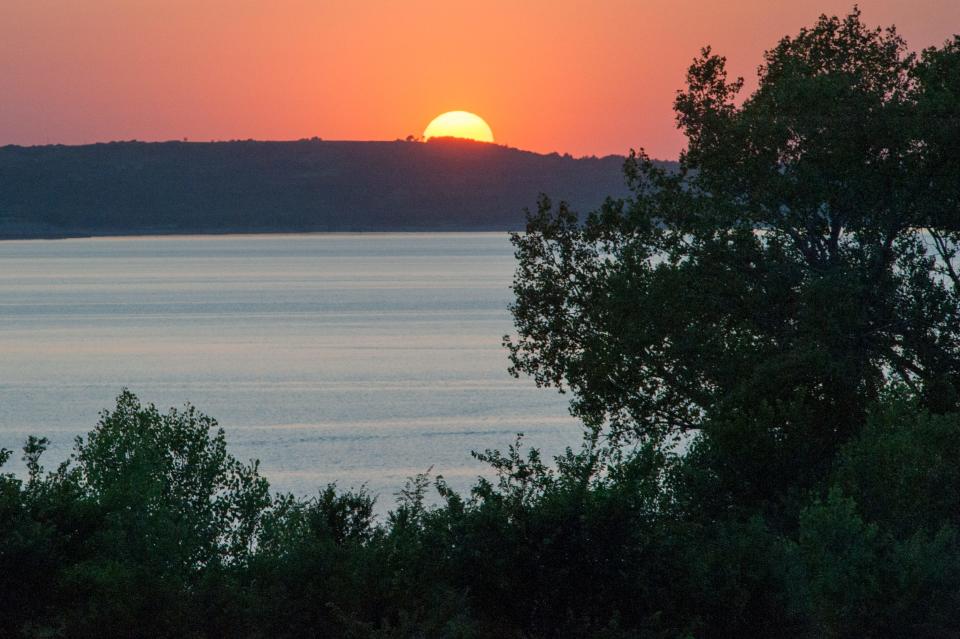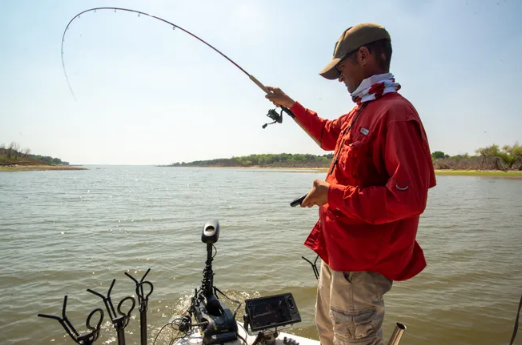How deep are Kansas' 24 man-made reservoirs? Here's how they all stack up
The state of Kansas is home to 24 man-made reservoirs, all built by the federal government between 1940 and 1982.
Maximum depths range from 72 feet for Tuttle Creek Reservoir, the deepest of those lakes, to 20 feet for John Redmond Reservoir, the shallowest.
Here's how deep each of them go.

Tuttle Creek Reservoir is deepest in Kansas
The state's deepest lake is Tuttle Creek Reservoir in Pottawatomie and Riley counties, where operation project manager Brian McNulty told The Capital-Journal the maximum depth is 72 feet.
That lake encompasses 10,900 surface acres, according to the website of the Kansas Department of Wildlife and Parks.
The reservoir's maximum depth is not expected to change appreciably as a result of a dredging project set to be carried out there next year, McNulty said.

Milford and Wilson lakes tie for second place in Kansas
Two lakes are tied for second deepest in Kansas, with each having a maximum depth of 65 feet.
One of those, Milford Lake in Clay and Geary counties in north-central Kansas, is also the state's largest lake in terms of surface area. It encompasses 16,200 surface acres.
The other is Wilson Lake, located in Russell County in north-central Kansas. Wilson Lake encompasses 9,040 surface acres.
These lakes rank fourth through 11th in terms of depth
Three lakes are tied for fourth with a maximum depth of 60 feet.
They are as follows:
• Big Hill Lake in Labette County in southeast Kansas, which encompasses 1,240 surface acres.
• El Dorado Lake in Butler County in south-central Kansas, which encompasses 8,000 surface acres.
• Melvern Lake in Osage County in northeast Kansas, which encompasses 7,000 surface acres.
Cedar Bluff Reservoir in Trego County in northwest Kansas is in seventh place with a maximum depth of 58 feet. It encompasses 6,869 surface acres.
Hillsdale Lake in Miami County in east-central Kansas is eighth with a maximum depth of 57 feet. It encompasses 4,580 surface acres.
Council Grove Lake in Morris County in central Kansas is ninth with a maximum depth of 56 feet. It encompasses 3,280 surface acres.
Two lakes are tied for 10th with a maximum depth of 55 feet.
They are Clinton Lake in Douglas County in northeast Kansas, which encompasses 7,000 surface acres; and Glen Elder Reservoir in Mitchell County in north-central Kansas, which encompasses 12,586 surface acres.
These lakes rank 12th through 17th in maximum depth
In 12th place with a maximum depth of 50 feet is Pomona Lake in Osage County in east-central Kansas, which encompasses 4,000 surface acres.
Perry Lake in Jefferson County in northeast Kansas is 13th with a maximum depth of 43 feet. It encompasses 11,630 surface acres.
Tied for 14th with a maximum depth of 42 feet are Cheney Reservoir in Kingman and Reno counties in south-central Kansas, which encompasses 9,550 surface acres, and Webster Reservoir in Rooks County in northwest Kansas, which encompasses 3740 surface acres.
Keith Sebelius Reservoir in Norton County in northwest Kansas is 16th with a maximum depth of 42 feet. It encompasses 2,300 surface acres. The reservoir is named after Keith Sebelius, of Norton, who represented the state's First District in the U.S. House of Representatives from 1969 to 1981. Sebelius died at age 65 in 1982. He's the father of retired U.S. Magistrate Judge Gary Sebelius and the father-in-law of former Kansas Gov. Kathleen Sebelius.
La Cygne Reservoir in Linn County in east-central Kansas is 17th with a maximum depth of 40 feet and encompasses 2,600 acres.
These lakes rank 18th through 24th in maximum depth
Two lakes are tied for 18th with a maximum depth of 35 feet.
One is Kanopolis Lake in Ellsworth County in central Kansas, which encompasses 3,550 surface acres.
The other is Lovewell Reservoir in Jewell County in northwest Kansas, which encompasses 2,986 surface acres.
Twentieth is Marion Lake in Marion County in central Kansas, which lake manager Brock DeLong told The Capital Journal has a maximum depth of 30.5 feet. That lake encompasses 6,160 surface acres.
Fall River Lake in Greenwood County in southeast Kansas is 21st with a maximum depth of 25.1 feet. It encompasses 2,500 surface acres.
Toronto Lake in Greenwood County in southeast Kansas is 22nd with a maximum depth of 24.2 feet. It encompasses 2,800 surface acres.
Elk City Reservoir in Montgomery County in southeast Kansas is 23rd with a maximum depth of 24 feet. It encompasses 4,450 surface acres.
John Redmond Reservoir in Coffey County in southeast Kansas is 24th with a maximum depth of 20 feet. It encompasses 9,400 surface acres. The reservoir is named after John Redmond, publisher of the Burlington Daily Republican, who died in 1953 at age 79.
Contact Tim Hrenchir at threnchir@gannett.com or 785-213-5934.
This article originally appeared on Topeka Capital-Journal: Depths of Kansas' man-made lakes, how many feet deep each are

